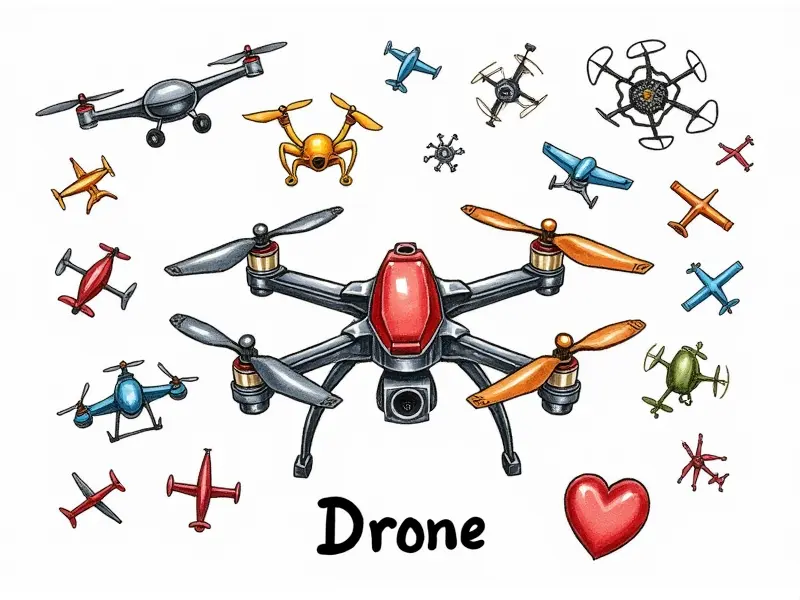What's an RC helicopter?

Beginner's Guide to RC Helicopters
Welcome to the world of remote-controlled (RC) helicopters! If you're new to this exciting hobby, you might be wondering what an RC helicopter is and how it works. This guide will walk you through everything you need to know about these fascinating machines.
Understanding RC Helicopters
An RC helicopter is a miniature aircraft that can be controlled from the ground using radio signals. These helicopters come in various sizes, ranging from small indoor models to larger outdoor models capable of impressive aerial maneuvers. They are popular among hobbyists and enthusiasts who enjoy flying model aircraft.
How Do RC Helicopters Work?
RC helicopters operate on principles similar to full-sized helicopters but with scaled-down components. The main rotor blades generate lift, while the tail rotor controls yaw (the helicopter's rotation around its vertical axis). Electronic servos and a transmitter control these movements.
Key Components
- Main Rotor: Generates lift by rotating.
- Tail Rotor: Manages yaw to keep the helicopter stable.
- Servo Motors: Control pitch and roll of the main rotor.
- Battery Pack: Provides power for electronics and motors.
Why Choose an RC Helicopter?
Flying an RC helicopter offers numerous benefits, including:
- Fun and Excitement: The thrill of controlling a mini aircraft is unmatched.
- Skill Development: Enhances hand-eye coordination and problem-solving skills.
- Creative Expression: Customization options allow for personal touches.
Top Tips for Flying RC Helis
Mastery comes with practice. Here are some essential tips to help you get started:
- Start Small: Begin with a basic indoor model before moving on to more complex outdoor models.
- Practice Hovering: Master the art of hovering in place for better control.
- Join Clubs: Local RC clubs provide support and opportunities for learning.
Exploring RC Helicopter Features
RC helicopters come with a range of features designed to enhance performance and convenience. Some popular options include:
- Gyro Stabilization: Keeps the helicopter stable during flight.
- Built-in GPS: Allows for automated landing and takeoff.
- FPV (First Person View): Provides a real-time video feed from the helicopter's perspective.
Parts of an RC Helicopter Explained
Understanding the different parts of your RC helicopter is crucial for maintenance and operation. Here’s a breakdown:
Main Rotor Assembly
The main rotor assembly includes blades, hub, and pitch control mechanisms.
Blades
- Symmetrical vs Cambered Blades: Different designs for various performance needs.
Hub
- Cyclic Pitch Control: Adjusts the pitch of individual blades to control movement.
Tail Rotor Assembly
The tail rotor assembly includes a smaller set of blades that counteract torque from the main rotor.
Tail Blades
- Adjustable Pitch: Allows for fine-tuning control.
Fun Facts About RC Helicopters
Did you know?
- The first radio-controlled helicopter was developed in the 1960s by the US military.
- Larger RC helicopters can perform aerobatic maneuvers similar to full-sized aircraft.
- Some models feature advanced technology like autopilot and collision avoidance systems.
Understanding RC Helicopter Controls
Flying an RC helicopter involves mastering several controls:
- Ailerons: Control roll (side-to-side movement).
- Elevators: Control pitch (up and down movement).
- Rudder: Controls yaw (rotation).
Choosing the Right RC Helicopter
Selecting the right model depends on your experience level, budget, and intended use. Consider factors such as:
- Budget: Entry-level models are more affordable but less feature-rich.
- Size: Indoor models are smaller, while outdoor models offer greater range and performance.
RC Helicopter vs Real Helicopter
The main differences between RC helicopters and full-sized ones include size, cost, complexity, and legal restrictions. While real helicopters require extensive training and certification, RC helicopters can be flown by hobbyists with minimal instruction.
Key Differences
- Size: RC helicopters are significantly smaller than their full-sized counterparts.
- Cost: RC models are much more affordable and accessible to hobbyists.
In conclusion, RC helicopters offer a unique blend of excitement and technical challenge that appeals to enthusiasts of all ages. Whether you're just starting out or looking to upgrade your skills, there's always something new to learn in the world of remote-controlled aviation. Happy flying!

